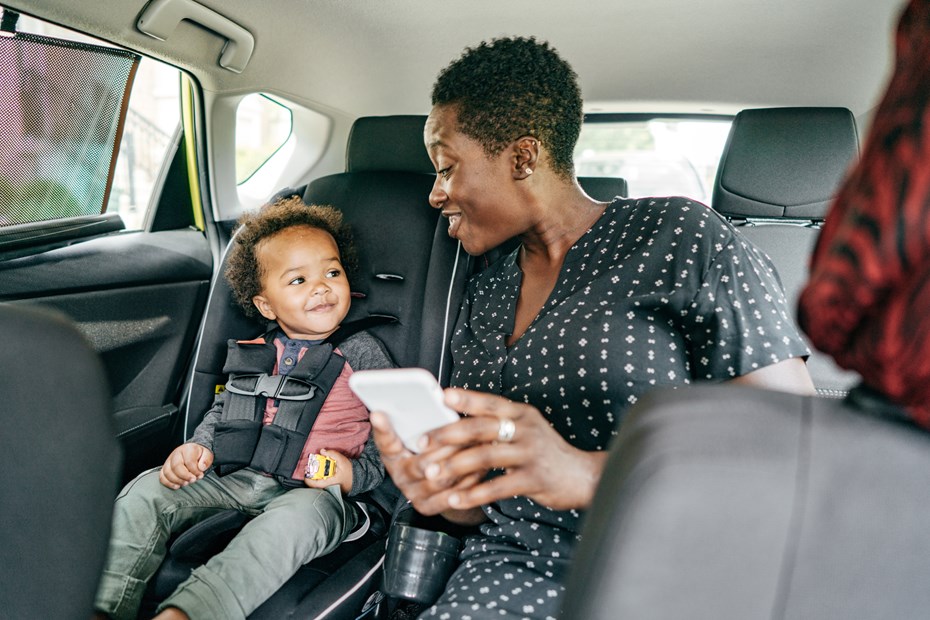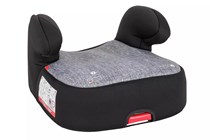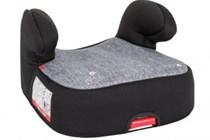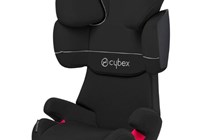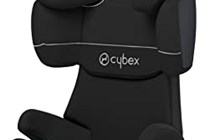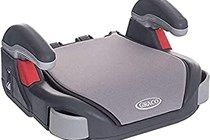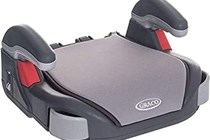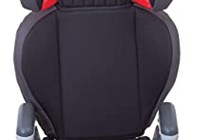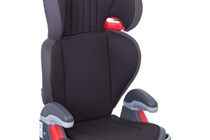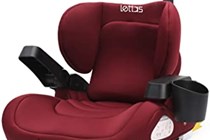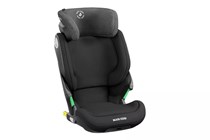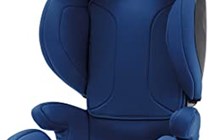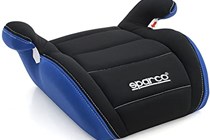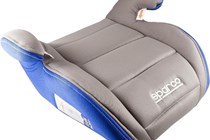There are two kinds of booster seats: the more traditional seats your child sits on and you buckle them in and the high-backed option. Whatever you choose, it’s important to remember that your child should be in a car seat until they are 135cm tall or 12 years old, whichever comes first; this is legally required. It’s also important to note that it is recommended that your child should be rearward facing until they are four years old.
Child Seat Safety, independent advisors to the UK car seat industry, retail, government, emergency services and consumers, announced their latest research specifically analysing the direction of all car seats for children aged four and under. Out of 2,000 car seats that were surveyed, more than one in four (26%) children were found to rearward face whilst 74% travel forward-facing. 2% were found to be on unsuitable booster seats, 17% on high-back boosters and sadly, 1% were not restrained at all.
Many of us have our children forward-facing because it’s nice for them; they can see more, and if it stops the moaning from the backseat for a little bit longer, then it makes the journey less stressful. Choosing a car seat which is safe and secure while being comfortable for your little one is important, but so is making a journey as hassle-free as possible.
Best booster seats at a glance:
Editor’s choice: Graco Booster Basic Car Seat – Buy now from Amazon UK
Best for enhanced protection: Maxi-Cosi Kore i-Size Car Seat – Buy now from Argos
Best for safety and comfort: Recaro Mako 2 Core i-Size Car Seat – Buy now from Amazon UK
Best booster seats:
Editor's choice
Pros
- Quick to install
- Lightweight
- Machine washable cover
Cons
- No ISOFIX
- May be uncomfortable on longer journeys
Best for multi-vehicle use
It can be secured with ISOFIX or a three-point seat belt with guide.
Pros
- ISOFIX connectors
- Seatbelt clip
Cons
- The seat padding could be a little thicker
Best for a sporty look
Available in various colours, the fabric is removable and water and dirt-repellent. While there is no ISOFIX, it will secure in place using your car’s three-point seatbelt.
Pros
- Water and dirt-repellent
- Variety of colours
- Well-respected brand
Cons
- No ISOFIX
Best high-back seat
You can either secure this in place with the ISOFIX or use the car’s three-point seat belt if ISOFIX is not possible in your vehicle.
Pros
- Well-respected brand name
- ISOFIX and seat belt secured
Cons
- It may not last until your child is tall enough not to need a car seat
Best for budget
There are retractable cupholders on either side of the seat so that you can position this anywhere along the rear of your car, the armrests are height adjustable, and the headrest adjusts, too. The seat pad can be removed and is machine washable. The seat does not have ISOFIX connectors and secures using your car’s three-point seat belt.
Pros
- Low cost
- Cup holders
- Height-adjustable armrests
Cons
- No ISOFIX
Best for enhanced protection
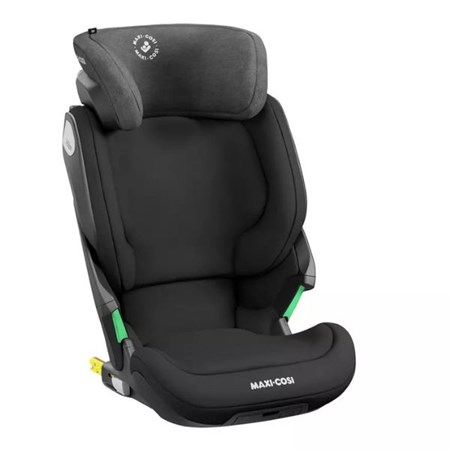

The Kore is designed for Group 2/3 children and is suitable for children between 100 and 150cm tall. It has ISOFIX connectors, and you strap in your child using your car’s three-point seat belt. It’s super quick to install and is made to be very easy for your child to get in and out of. Maxi-Cosi’s own Side Protection System Plus is there for enhanced side impact protection.
Read the full Maxi-Cosi Kore Pro i-Size review on our sister site, Mother&Baby.
Pros
- Well-respected brand name
- Safe and secure
- Has an upper limit of 150cm
Cons
- Somewhat on the pricy side
- No cupholders
Best for comfort and safety
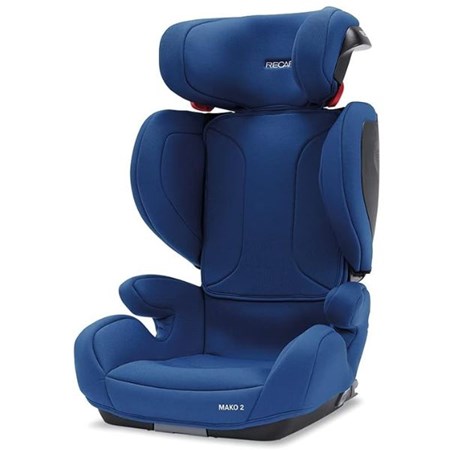

It has ISOFIX connectors, armrests, adjustable headrests and big wings on the side for optimum protection. This seat is built for comfort with foam which adapts to your child’s seating position and a wider headrest. The seat also features an air ventilation system to help keep your child’s back cool while travelling.
Pros
- Comfortable and easy to install
- ISOFIX mounting has been made easier on this model
Cons
- No recline feature
Types of car booster seat
The style of car seats falls into the Group 3 category, and, if you’re unfamiliar with the groups:
• Group 0 – suitable from birth to 10kg (around 12 months) – these are usually lie-flat carrycot options that combine with a buggy or pushchair chassis to form a travel system
• Group 0+ – suitable from birth to 13kg (around 18 months-2 years) – these can usually combine with a buggy to form a travel system and are also known as infant carriers
• Group 0+/1 – suitable from birth to 18kg (around 4-5 years)
• Group 0+/1/2/3 – suitable from birth to 36kg or 135cm tall (about 12 years)
High-backed booster seat
Often considered safer, the higher back and the wings and head protectors make them more suited to keeping your child safer. However, could you see your 10-year-old in one of these? Chances are, they’re already past the 135cm height limit by this point and probably won’t need a car seat, but if they still do… it looks a bit awkward for an older child. However, from ages four to around six, they could work very well for your child.
These booster seats may be held in place by your car’s three-point seat belt, but they may also be held in place by ISOFIX.
What is ISOFIX?
If you’re wondering what ISOFIX is, it stands for International Standard Organisation Fix and is possibly the best and safest way to ensure your car seat is secured. They’re effectively anchor points on your car’s internal shell, meaning when connected, the child seat is attached to the vehicle rather than held in place by a seatbelt.
It became common to see these anchor points in cars released after November 2012, but they were not an industry standard. Since November 2014, all new vehicles are legally required to have ISOFIX fitted.
How do I know if my car has ISOFIX?
Happily, ISOFIX on modern cars is easy to find and access; they’re generally under covers on the back seats with a logo that looks like a person sitting in a seat. It never used to be so evident in older cars, and you had to feel between the back of the seat and the base of the seat to see if the ISOFIX was there. This made fitting them very difficult. With exposed pinion points, this new system makes fitting car seats a doddle and takes seconds.
Myles Warwood is an Autos Products Writer for both Parkers and CAR, specialising in child seats and e-bikes. In his spare time, he’s a freelance cycling journalist and dog owner.
Sign up to the Parkers Newsletter to keep up to date with more of the latest reviews, news, and recommendations from the Parkers team.
Just so you know, whilst we may receive a commission or other compensation from the links on this page, we never allow this to influence product selections – read why you should trust us.
Just so you know, we may receive a commission or other compensation from the links on this website - read why you should trust us.


